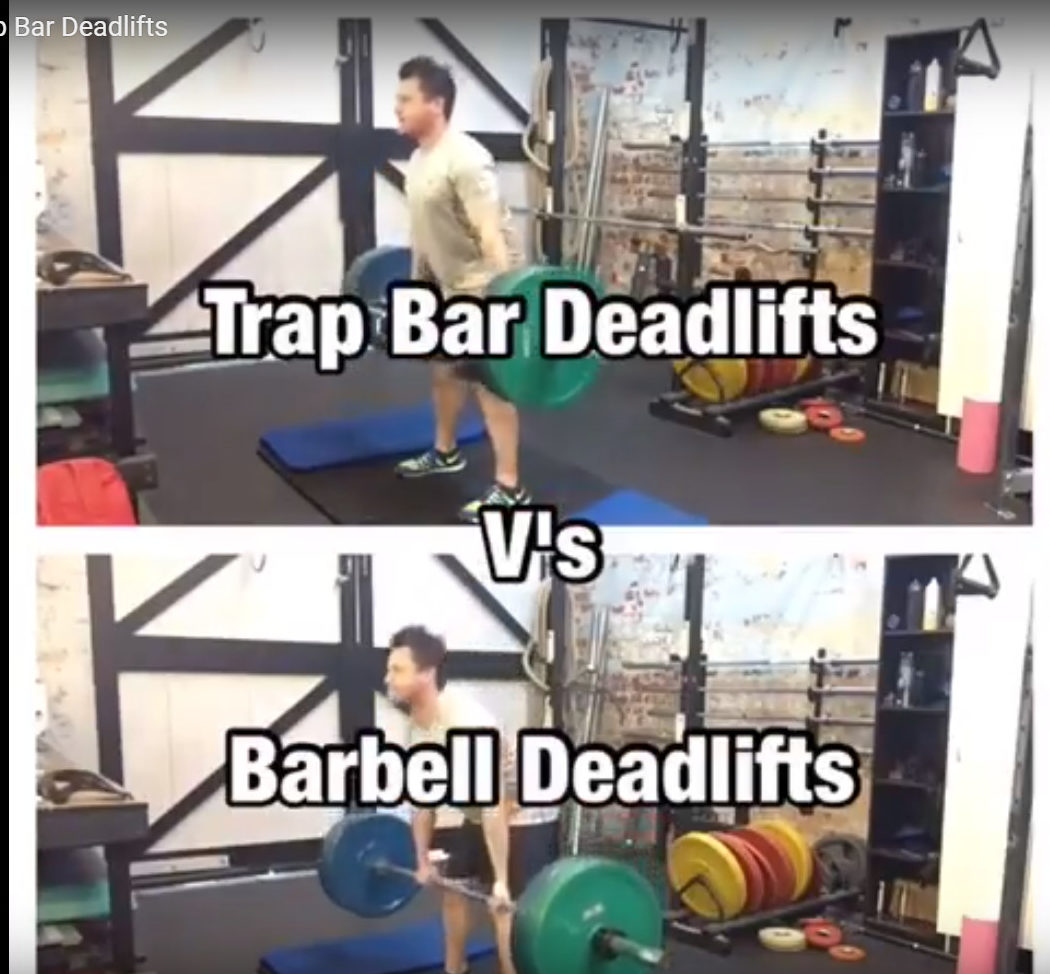we delivers enough to blog about

Trap Bar Vs Barbell Deadlifts
Trap Bar Vs Barbell Deadlifts
In terms of muscles activation, the deadlift is one of the best exercises in terms of the amount of muscles that are required to lift the bar off the floor. The barbell deadlift is predominately a posterior chain exercise using the hamstrings, glutes, erector spinae, lats with also quad and ab/core activation.
The problem with the deadlift lies with clients or trainees who have never deadlifted before or who have poor mobility. There is the potential for greater loads being placed on the lumbar spine and curving of the middle and upper back. Also with taller, inexperienced clients who have long arms and legs, the lifter often has trouble avoiding the knees with the bar or getting the bar close enough to the shins to avoid extra load being placed on the lower back.
There are a number of different variations to the deadlift. Using the standard barbell you have conventional deadlifts, straight leg deadlifts, sumo deadlifts and snatch grip deadlifts. You can also use double overhand grip or the mixed grip/under over grip.
Then there is the trap bar or hex bar deadlifts.
For those of you who don’t know, the trap bar or hex bar is a hexagonal or diamond shaped bar that you step into rather than stand behind. The hex bar has handles on either side that allow you pick the bar up like you are picking up two suitcases. Some trap bars will also allow you to turn the bar over and use a higher grip.
So what are the main differences, advantages and disadvantages of using conventional barbell deadlifts over trap bar deadlifts?
I first discovered the trap bar back in 2011 at a strength and conditioning course. Straight away I could tell the trap bar placed less stress on the lower back and allowed for more knee flexion and greater quad activation. The shape of the trap bar also allows for both forward and backwards movement plus tilting left or right and up and down meaning you need greater core, tricep and lat activation to keep the bar stable.
I also felt that I could use more weight with the trap bar than the conventional barbell or that the same weight on both bars felt more manageable with the trap bar.
A study completed by Swinton et al which analysed the power and weight distribution on the trap bar versus the standard barbell. The study confirmed the trap bar placed less stress on the lumbar spine and hips than the standard straight barbell. This study also demonstrated that the trap bar allowed for greater levels of power and force to be generated. Hence why you feel like you can lift heavier with the trap bar over the standard barbell.
For clients who have poor range of movement or poor flexibility to execute the deadlift with the barbell, I find the trap bar is more effective at helping the client get into the right position to lift without placing excess load through the lumbar spine or curving of the lower back. You can also turn the bar over and use the higher handles which is also beneficial for clients who are unable to complete full range of movement without curving the upper back.
I’ve also found the trap bar useful in helping clients break through a plateau on the straight bar. As conventional barbell deadlifts are more of a posterior chain exercise and trap bar deadlifts more anterior chain, swapping over to trap bar deadlifts for a period of time then going back to barbell deadlifts tends to help break a lifting plateau.
Either way, there is no right or wrong, better or worse deadlift. Both the trap bar and barbell have different advantages and disadvantages. I personally alternate between both. Try both and see which one you prefer. If you’ve hit a plateau with the barbell, try the trap bar. If you’re wanting to increase size and strength in your posterior chain then go with the barbell. Keeping track of the weight you are lifting, the reps and varying both are the key to progress.